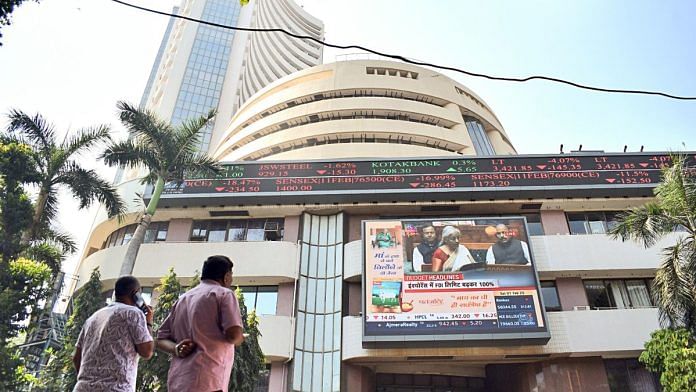The world is in turmoil. Geopolitical tensions have meant that established patterns of global trade and finance are no longer as certain. Many households would have probably seen a fall in their portfolio value in the last couple of months.
How do households navigate these turbulent times? What are the timeless investment principles that can guide us as our portfolios get shaken in these uncertain times? This is the time to eschew emotional responses in favour of reasoned long-term strategies.
Trust in the long-term
Predictions of impending doom may lead many of us to succumb to emotion and make reckless investment decisions. It is useful to remind ourselves that a reliable investment strategy is one that knows how to ride through the peaks and troughs of market cycles.
Let’s go back in history to see how asset prices dealt with the world wars and other global crisis events. The first lesson is that the markets eventually recover. Real equity returns in the US have been between -18 to -50 per cent in bad times such as World War 1, the recession in 1973-74, the internet bust of 2000-02 and the financial crisis of 2008. However, in good times, immediately in the aftermath of some of these events, they have also been as high as 300-400 per cent. Those that had the wherewithal to stay invested and diversified across different sectors in these times, would have fared better in the long run.
War and crises can wreak havoc in the short term. However, the economic cycle evolves, and markets eventually reflect the underlying productivity of the global economy. Short-term dislocations do not change the fact that innovation is a powerful driver of wealth creation. Continuing on the path of disciplined investing with a focus on long-term fundamentals is likely to emerge as the winning strategy in the long term.
Also read: India’s deadly combo—market plunge, unemployment, stagnant wages & rising personal debt
The importance of diversification
Portfolio diversification is an important investment strategy in good times. It becomes even more important in bad times. Diversification helps deal with two fundamental problems: The correlation between different asset classes and the correlation between locations. Losses in one area should be offset by gains or stability in another. For example, the 2008 financial crisis was bad for global equity markets but good for US Treasury bonds and gold. Gold, in particular, has been a particularly useful asset class in times of trouble. The two recent crises, such as the financial crisis of 2008 and Covid-19, saw gold giving high returns amid fears of inflation and currency devaluations.
Similarly, all industries and locations do not get affected equally at the same time. Diversification across sectors and geographies can mitigate country-specific and industry-specific risks. Many in India think that overseas investing is not as lucrative because returns in India are higher. They are making two mistakes—one foreign investments can reap higher returns because of currency depreciation. Second, investing in foreign assets is not just about returns, but about diversification. It is useful to spread our risks across different asset classes and different geographies. A well-constructed portfolio spanning asset classes such as equities, fixed income, gold, and exposure to different economies can help reduce exposure to any single source of risk.
Also read: Housing is not a smart investment for the Indian middle class anymore
The false allure of market timing
There is a certain allure to getting the timing right when it comes to investing. Buy cheap, sell when expensive, and make a killing. The desire to get this right is perhaps more pronounced in times of crisis. In the best of times, even professional investors have done poorly at market timing. The literature suggests that over long horizons index funds have beaten actively managed mutual funds—run by analysts and professionals. Retail investors would have an even lower chance.
It is not possible to predict the best time to enter and exit from markets on a consistent basis. A variety of factors—from central bank interest rate decisions to sudden tariff barriers and unforeseen crises—are beyond the basic forecasting models that are potentially accessible to retail investors. In a world dominated by algorithms, it becomes even harder to discern between sources of information. One can easily get swayed by self-appointed experts, and it becomes hard to know fact from fiction. Predicting short-term movements is a mug’s game, and on average, erodes long-term returns.
Short-term fluctuations can make people succumb to knee-jerk reactions, driven by panic. Such actions ignore the historical resilience of financial markets. Past crises, including wars and financial meltdowns, are eventually followed by periods of recovery, underscoring the enduring power of economic productivity and innovation. There is a place for building up emergency funds for potential labour market losses. Other than this, it is important to stay the course, stay invested, diversify the portfolio and give up on the illusion of market timing.
Renuka Sane is managing director at TrustBridge, which works on improving the rule of law for better economic outcomes for India. She tweets @resanering. Views are personal.
(Edited by Theres Sudeep)






